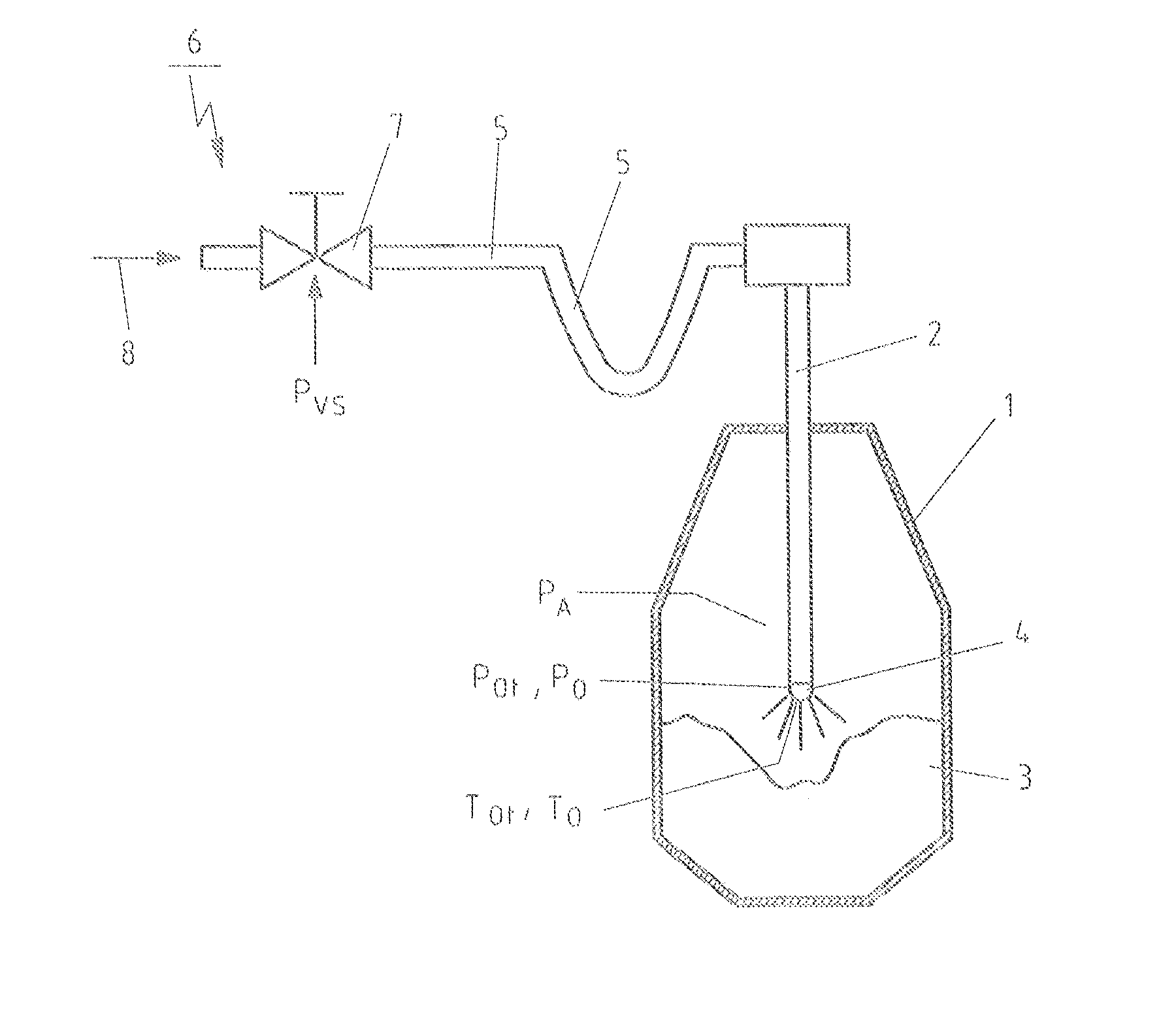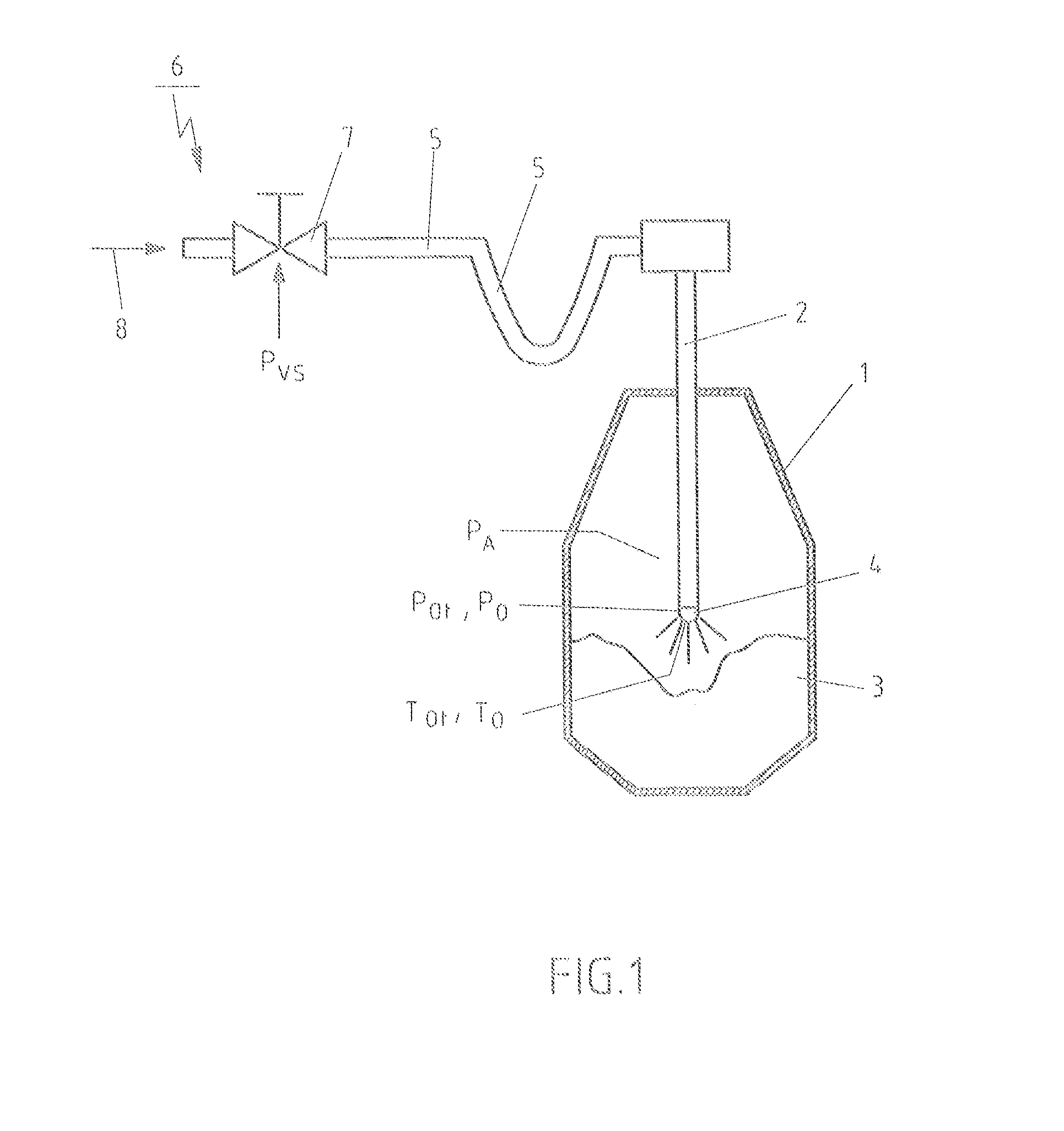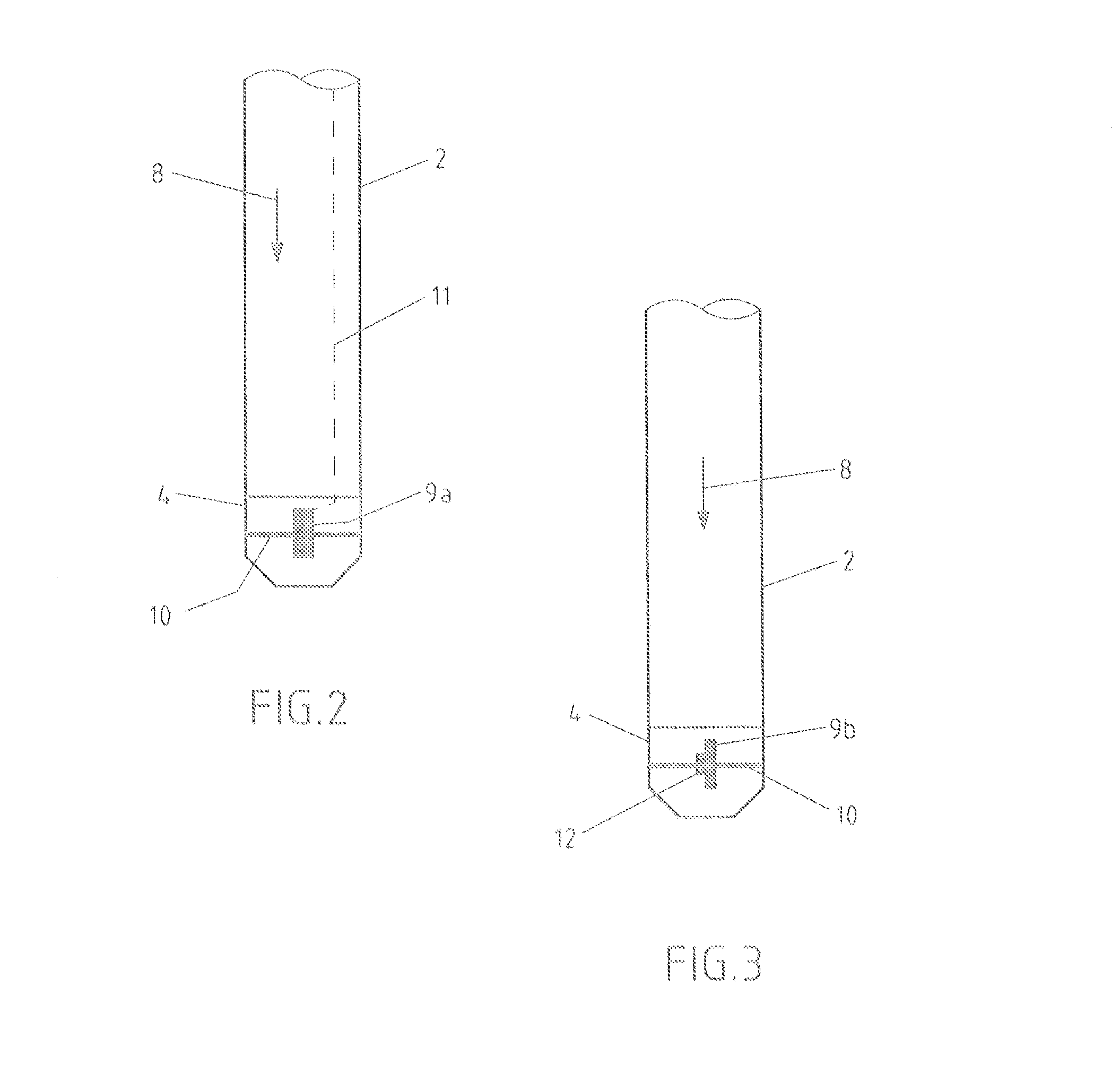Method for operating an oxygen blowing lance in a metallurgical vessel and a measurement system for determining a measurement signal used in the method
a technology of oxygen blowing lance and metallurgical vessel, which is applied in the direction of furnaces, furnace monitoring devices, charge manipulation, etc., can solve the problems of nozzle wear, premature separation of the jet from the nozzle wall, and wear of the nozzle edg
- Summary
- Abstract
- Description
- Claims
- Application Information
AI Technical Summary
Benefits of technology
Problems solved by technology
Method used
Image
Examples
Embodiment Construction
[0049]FIG. 1 shows a blowing lance 2, especially an oxygen blowing lance, which has been introduced from above into a metallurgical vessel 1 designed as a converter; when in operation in the working position shown in FIG. 1, the lance blows gas onto a metal bath 3 in the metallurgical vessel 1. At the end of the blowing lance 2 located at the bottom in the diagram of FIG. 1, a replaceable head 4 is mounted, which forms the tip of the blowing lance. Inside the head 4 of the lance are several supersonic nozzles, which are indicated by the dashes proceeding from the head 4 of the lance.
[0050]Through a feed line 5 consisting of pipes or hoses, the blowing lance 2 is connected to a gas feed station 6, which comprises a valve station 7, by means of which the gas 8 to be blown out from the head 4 of the lance can be supplied in regulated fashion to the feed line 5. In the exemplary embodiment, the gas 8 is a gas used in oxygen blowing processes, that is, oxygen or an oxygen-containing gas ...
PUM
| Property | Measurement | Unit |
|---|---|---|
| Temperature | aaaaa | aaaaa |
| Pressure | aaaaa | aaaaa |
| Power | aaaaa | aaaaa |
Abstract
Description
Claims
Application Information
 Login to View More
Login to View More - R&D
- Intellectual Property
- Life Sciences
- Materials
- Tech Scout
- Unparalleled Data Quality
- Higher Quality Content
- 60% Fewer Hallucinations
Browse by: Latest US Patents, China's latest patents, Technical Efficacy Thesaurus, Application Domain, Technology Topic, Popular Technical Reports.
© 2025 PatSnap. All rights reserved.Legal|Privacy policy|Modern Slavery Act Transparency Statement|Sitemap|About US| Contact US: help@patsnap.com



